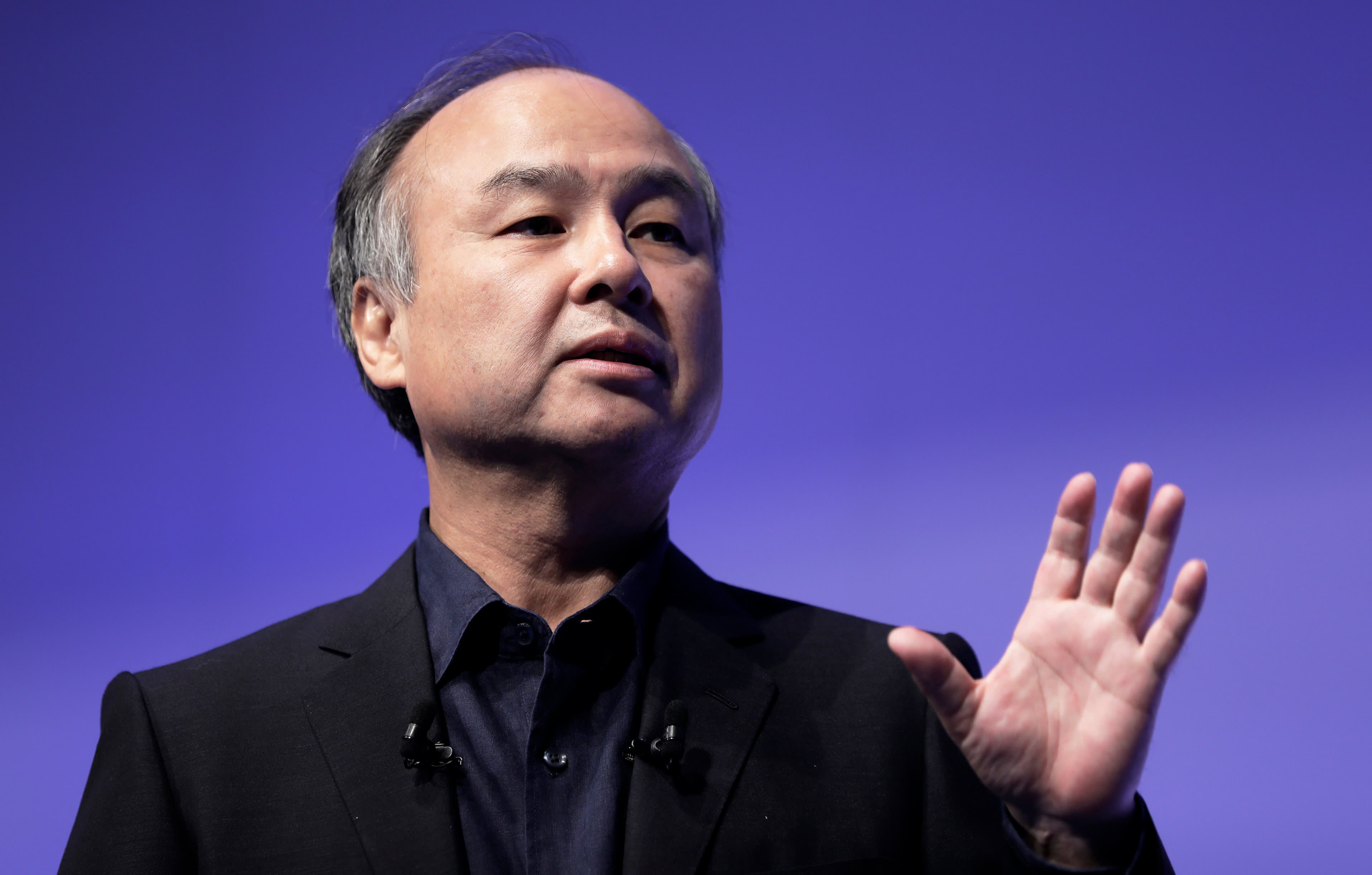Bold Predictions: SoftBank CEO Anticipates Arrival of Artificial Super Intelligence within a Decade

Bold Predictions: SoftBank CEO Anticipates Arrival of Artificial Super Intelligence within a Decade
In a daring proclamation at the annual SoftBank World corporate conference, Masayoshi Son, the CEO of SoftBank, has set the tech world abuzz by asserting that Artificial General Intelligence (AGI) will become a reality within the next ten years. This AI achievement would signify a monumental leap in the field, with AGI surpassing human intelligence in nearly every domain. Son’s predictions have been met with both fascination and skepticism, as the timeline he has proposed could potentially usher in a new era of unprecedented technological advancement.
Speaking at the conference, Son expounded on his vision for AGI, emphasizing its capacity to outstrip the collective intelligence of humanity by a factor of ten. The SoftBank CEO highlighted the astonishing progress in generative AI, noting instances where it has already exceeded human capabilities in certain specific areas. “It is wrong to say that AI cannot be smarter than humans as it is created by humans,” Son argued. “AI is now self-learning, self-training, and self-inferencing, just like human beings.”
While Masayoshi Son has previously voiced his convictions about the transformative potential of AGI, often referring to it as the “singularity,” this occasion marked the first time he disclosed a specific timeline for its potential realization. He also introduced the concept of “Artificial Super Intelligence” (ASI), a concept he believes will come to fruition within two decades, surpassing human intelligence by an astonishing factor of 10,000.
Son is no stranger to making daring predictions and visionary bets, some of which have catapulted SoftBank into the upper echelons of tech investment. However, not all of his predictions have panned out, as evidenced by some high-profile disappointments. Regardless, his unwavering confidence in the transformative power of emerging technologies remains a driving force behind his vision.

During the conference, Son issued a rallying cry to Japanese companies, urging them to “wake up” to the promises and potential of AI. He argued that Japan had lagged behind in the internet age and reiterated his faith in chip designer Arm as a cornerstone of the impending “AI revolution.”
Rene Haas, the CEO of Arm, joined the conference via video link and underlined the energy efficiency of Arm’s chip designs, asserting that they would be increasingly sought after to power artificial intelligence. Haas, sharing Son’s optimism, believed that AGI would materialize within his lifetime.
While Son’s forecast is undoubtedly ambitious, it prompts a critical examination of the state of AI and its future prospects. To assess the likelihood of AGI within a decade, it is essential to scrutinize the current trajectory of AI, explore the challenges on the path to AGI, and weigh the broader implications of such a monumental technological leap.
The Current State of AI
Artificial Intelligence has made remarkable strides in recent years, with innovations like deep learning, neural networks, and natural language processing enabling AI systems to perform tasks previously thought to be the exclusive domain of human intelligence. AI is now deeply integrated into various aspects of our daily lives, from virtual personal assistants like Siri and Alexa to self-driving cars and advanced medical diagnostics.
These advancements have made AI more powerful and versatile than ever before. AI technologies are now capable of outperforming humans in specific tasks, from image recognition to language translation and even complex games like chess and Go. This remarkable progress has led to a surge of interest and investment in AI across industries.
Challenges on the Path to AGI
While AGI remains an aspirational goal, achieving it poses a formidable set of challenges. The development of AGI goes beyond the current paradigm of narrow or specialized AI, which excels in one specific area but struggles when faced with tasks outside its designated scope.
One primary challenge is creating AI systems that can learn and adapt across a broad spectrum of tasks and domains, mirroring the general intelligence exhibited by humans. Achieving this level of adaptability and versatility is a complex endeavor that requires not only massive computational power but also a deeper understanding of how human intelligence functions.
Additionally, there are ethical, regulatory, and safety concerns associated with AGI. The prospect of superintelligent AI raises questions about control and governance, as well as the potential for unintended consequences. Ensuring that AGI is used for the benefit of humanity and does not pose existential risks is a critical consideration.

Progress in Generative AI
One area of AI that has shown remarkable progress and has garnered significant attention is generative AI, which includes technologies like OpenAI’s GPT (Generative Pre-trained Transformer) models. These models use large-scale neural networks to generate human-like text and have achieved impressive results in tasks such as text generation, language translation, and even generating creative works of art.
Generative AI has the potential to revolutionize content creation, making it easier for businesses to generate written content, video scripts, and other forms of media. The rapid advancements in this field have demonstrated AI’s capacity to surpass human capabilities in specific areas.
Son’s Vision for AGI
Masayoshi Son’s predictions, while ambitious, are rooted in the belief that the trajectory of AI development is accelerating. His assertion that AGI will be ten times more intelligent than the collective human intelligence challenges conventional thinking, which often treats AGI as a more distant aspiration.
Son’s vision encompasses the possibility of AGI not just mimicking but surpassing human cognition in a wide range of domains. If realized, this would have profound implications for industries, economies, and societies worldwide.
The Concept of Artificial Super Intelligence
Son’s introduction of the concept of Artificial Super Intelligence (ASI) raises the stakes even further. While AGI represents a significant leap in AI capabilities, ASI implies a level of intelligence that is orders of magnitude beyond human comprehension. ASI, if achieved, would not just exceed human intelligence but would redefine the boundaries of what is conceivable.
The timeline of 20 years that Son proposes for ASI might be even more audacious than his AGI prediction. Achieving ASI, given its potential to be 10,000 times more intelligent than human beings, is a monumental task that would require unprecedented scientific and technological breakthroughs.
Son’s Track Record
Masayoshi Son is known for his ability to make visionary bets in the tech and investment world. His calculated risk-taking has led SoftBank to become a major player in the tech industry. Notable successes include early investments in companies like Alibaba, which have yielded substantial returns.
However, Son’s track record is not without its share of high-profile setbacks. His enthusiasm for investments in companies like WeWork, which faced financial turmoil, and the ambitious Vision Fund, which encountered challenges, have led to financial setbacks for SoftBank. These examples serve as a reminder that even seasoned visionaries can encounter difficulties in the ever-evolving tech landscape.

The Importance of Arm in the “AI Revolution”
Son’s reference to Arm as a cornerstone of the impending “AI revolution” reflects the critical role that hardware plays in the development of AI and AGI. Arm’s chip designs have been widely adopted in various devices, from smartphones to IoT (Internet of Things) devices.
Efficient hardware is essential for AI systems, especially as they become more sophisticated and demand greater computational power. The energy efficiency touted by Arm’s designs is crucial, as it can significantly impact the feasibility and scalability of AI applications.




